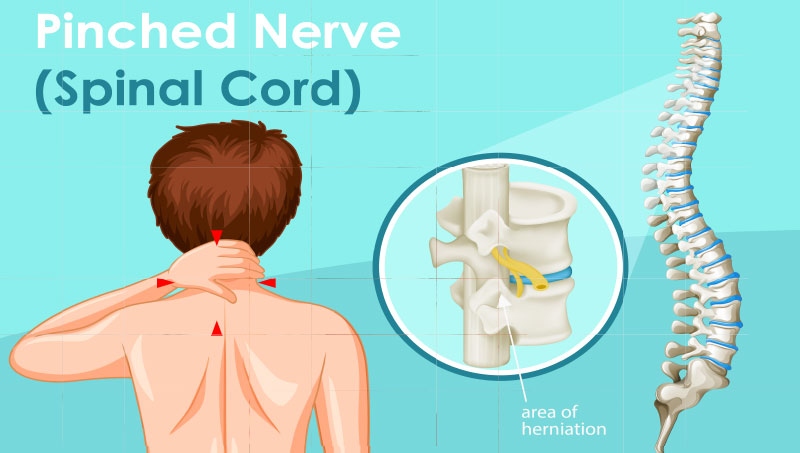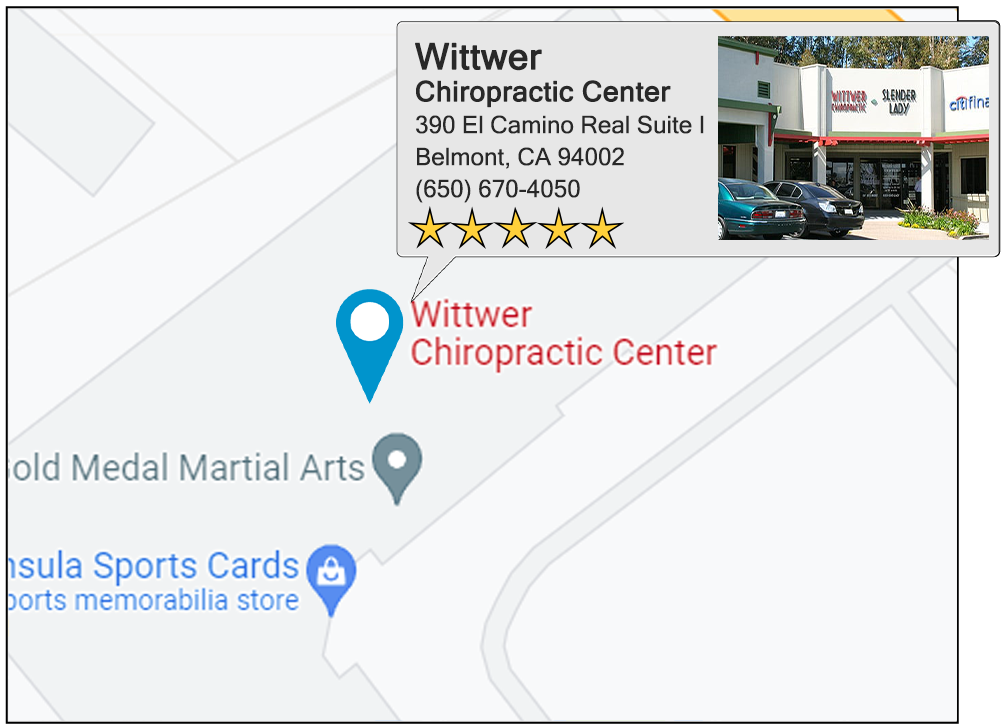Pinched Nerve Pain

Let’s start with the basics. A nerve is like a wire. A wire is usually made of copper and wrapped in a thermoplastic coating for insulation. A nerve is wrapped in a myelin sheath for insulation. A nerve sends signals (electrochemical) to and from the area sensed to the brain and spinal cord.
The Mayo Clinic defines a pinched nerve as: A pinched nerve can occur at several sites in your body. A herniated disk in your lower spine, for example, may put pressure on a nerve root, causing pain that radiates down the back of your leg (sciatica).
Likewise, a pinched nerve in your wrist can lead to pain and numbness in your hand and fingers (carpal tunnel syndrome). In a house, that copper wire we talked about may be surrounded by insulation as it runs its way to your lamp. Likewise a nerve may be wrapped in a nuerovascular bundle, or NAV. This NAV is comprised of nerves, blood vessels and/or lymphatics, wrapped in connective tissue. Free electrons moving through the copper wire provide electricity. Likewise, electrochemical signals move through your nerves to and from their target destination.
Do you ever feel longer than normal periods of fatigue? Do you want more energy?
Did you know the nerves actually affect those vessels increasing or decreasing blood flow? How do they do this? Imagine how much your nerves control your entire body! Blood supplies nutrients to your organs and muscles. What happens when you’re hungry? You need to eat. What happens when your organs and muscles are “hungry"? Yes, they need nutrition, as well. Blood flow carries these vital nutrients to where they need to go.
Scientifically, a pinched nerve may be called a radiculopathy. This is when a nerve may be compressed at the nerve root. Just like when a problem occurs where the wire in your house begins, the problem goes downstream, so to speak, to reduce electrical flow thus creating the flickering light. We can say the pain radiates where the nerve travels downstream, as well. This problem may create a neuropathy. This is simply when a nerve doesn’t work right, and the problem travels downstream. Either way, with a radiculopathy or a neuropathy, the result can be painful.
What if the NAV is compressed and nutrients can’t supply the target muscle or organ? That’s right, the organ or muscle starves, depending on how much the compression stops the flow. Nerves are important since they feed you! Your internal body experiences “hunger" as many different symptoms. It can feel pain, fatigue, tight muscles or tension. Experiencing these symptoms is normal. To live with them isn’t. An effective solution exists. What does a pinched nerve feel like? Have you ever hit your finger with a hammer? “Ouch! that hurts!" Is that what your nerve signals when it is pinched?
You feel it because it sends pain signals. Those signals are sent through afferent nerves, that go to your brain and spinal cord. Your brain and spinal cord process the signals and then through efferent nerves, the signal travels back to the place of pain, that pinched nerve, to tell you that your finger hurts.
Now what happens when that wire is compressed, or pinched? The light flickers. What do you have to do to get the light to stop flickering? Right! Straighten out the wire. Pretty simple. Have you ever had pain that wouldn’t go away and you didn’t know why? It might be a pinched nerve.
In your body, the pressure that was being exhibited on that nerve needs to be released. It needs to be unkinked; to have the pressure relieved. What does a chiropractor do? Yes, they relieve the pressure. They do this by intelligent adjusting. That release feels good because the nerve now has an open energy flow from beginning to end. How does this work in your house? When the wire is straightened out, then you have a continuous flow of light. The light stays on.
Have you ever tried to read a book with a flickering light? What happens? You get frustrated and maybe even, trying to concentrate, get a headache. Would you continue to read with this light flickering? Of course not. So why would you live with a pinched nerve? The energy supply to your organs, blood vessels to those organs and muscles, is shutting down! It’s like reading a book with a flickering light. Frustrating, to your body, and if continues, may decrease muscle and organ functioning!
This “frustration" is interpreted as pain and discomfort.
After a while your organs and muscles may suffer because the nerves supplying these essential parts of your body aren’t getting the energy they need to thrive, and even survive. What happens? Atrophy occurs in muscles when you haven’t used them in a while. Decreased functioning may also occur on an internal level, when necessary energy isn’t received.
After a while that flickering light in your house, if energy is still decreasing, stays off longer than it’s on. What do you think happens in your body when a nerve remains pinched? Right! That organ or muscle continues to lose energy. Painful, isn’t it? Do you ever feel longer than normal periods of fatigue? Do you want more energy? How do you release the pinched nerve pain?
A skilled chiropractor is able to find, and release the pressure, so that pinched nerve is able to experience energy freely. Relief, at last. Your body feels better because the vital flow of energy is going to where it needs to go. Remember that flickering light? What happens when you straighten out, or “unpinch," the wire? The light has a powerful flow of light-energy so you are able to read a book. When a chiropractor straightens out, or releases the pressure on your nerve, by a skilled adjustment, then your organs and muscles experience a powerful flow of energy.






